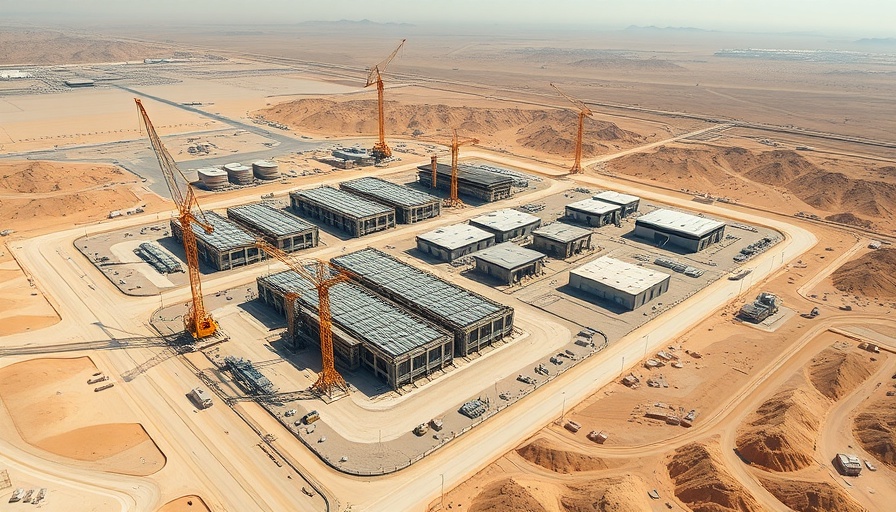
US Gains a Major Chip Player as TSMC Invests $100 Billion
The recent announcement from Taiwan Semiconductor Manufacturing Company (TSMC) signifies a monumental shift in the American semiconductor landscape. Pledging an additional $100 billion, TSMC aims to construct three state-of-the-art fabrication plants in Phoenix, Arizona, coupled with two packaging facilities and a cutting-edge research center. This investment not only solidifies TSMC's position as a leader in chip manufacturing but also represents the largest single foreign direct investment in U.S. history.
The Economic Ripple Effects
According to TSMC, this vast investment will cultivate approximately 40,000 construction jobs over the next four years. Once operational, the plants will create tens of thousands of high-paying, high-tech jobs in chip manufacturing and research. The company anticipates generating over $200 billion in indirect economic output nationwide, highlighting how this endeavor extends beyond mere job creation, turning into a vital economic engine for the region and the country.
Reviving Domestic Semiconductor Manufacturing
Since beginning its U.S. ventures in 2020 with a $12 billion commitment for its first factory, TSMC has progressively ramped up its investment. This trajectory saw the investment rise to $65 billion last April with an additional factory commitment. The long-term implications of this for U.S. chip production are profound, especially amid ongoing concerns around global supply chain vulnerabilities exacerbated by geopolitical tensions.
Political Climate and Semiconductor Renaissance
The announcement of this $100 billion investment, accompanied by remarks from former President Donald Trump, underscores a broader strategy to bolster U.S. semiconductor output. Trump characterized the endeavor as vital for America’s economic and national security interests. He noted that TSMC’s investment exemplifies the drive to ensure that the most powerful AI chips are manufactured domestically, thanks in part to supportive governmental policies like the CHIPS Act, which allocated $52 billion for semiconductor research and manufacturing initiatives.
The Strategic Role of AI in This Investment
AI technology remains at the center of this shift. TSMC supplies semiconductors to industry giants like Nvidia and Apple, particularly for AI applications. This investment aims to position the U.S. as a global leader not just in manufacturing but also in the advancing field of AI technologies. As Trump noted, this movement toward domestic production is not only practical but crucial for sustaining America’s competitive edge in a rapidly evolving technological landscape.
Challenges on the Horizon
Despite the optimistic projections, several challenges loom. The timeline for realizing the benefits of this investment is lengthy, with operations from these new plants not expected until 2027 or later. Moreover, recent Bloomberg reports have suggested potential cutbacks at the CHIPS Act Office, raising questions about the consistency of government support for such initiatives amidst shifting political climates.
TSMC’s Broader Impact on the Tech Ecosystem
As one of the world’s largest producers of AI chips, TSMC’s investments are poised to reshape not just the local economy of Arizona, but potentially the entire U.S. tech ecosystem. The interplay between corporate investments and government incentives could lead to a renaissance in American manufacturing—echoing sentiments expressed in previously enacted policies aiming to revive domestic production.
Call to Action: Embrace the Semiconductor Revolution
As this monumental investment unfolds, it becomes essential for stakeholders within the tech community, government officials, and educators to engage actively with these developments. The move towards a robust domestic semiconductor industry offers opportunities not just for economic growth but also for addressing educational needs in tech-oriented skills. Communities and policymakers must strategically align to ensure that the workforce is prepared for the high-tech jobs that will inevitably arise from this investment.
 Add Row
Add Row  Add
Add 




Write A Comment